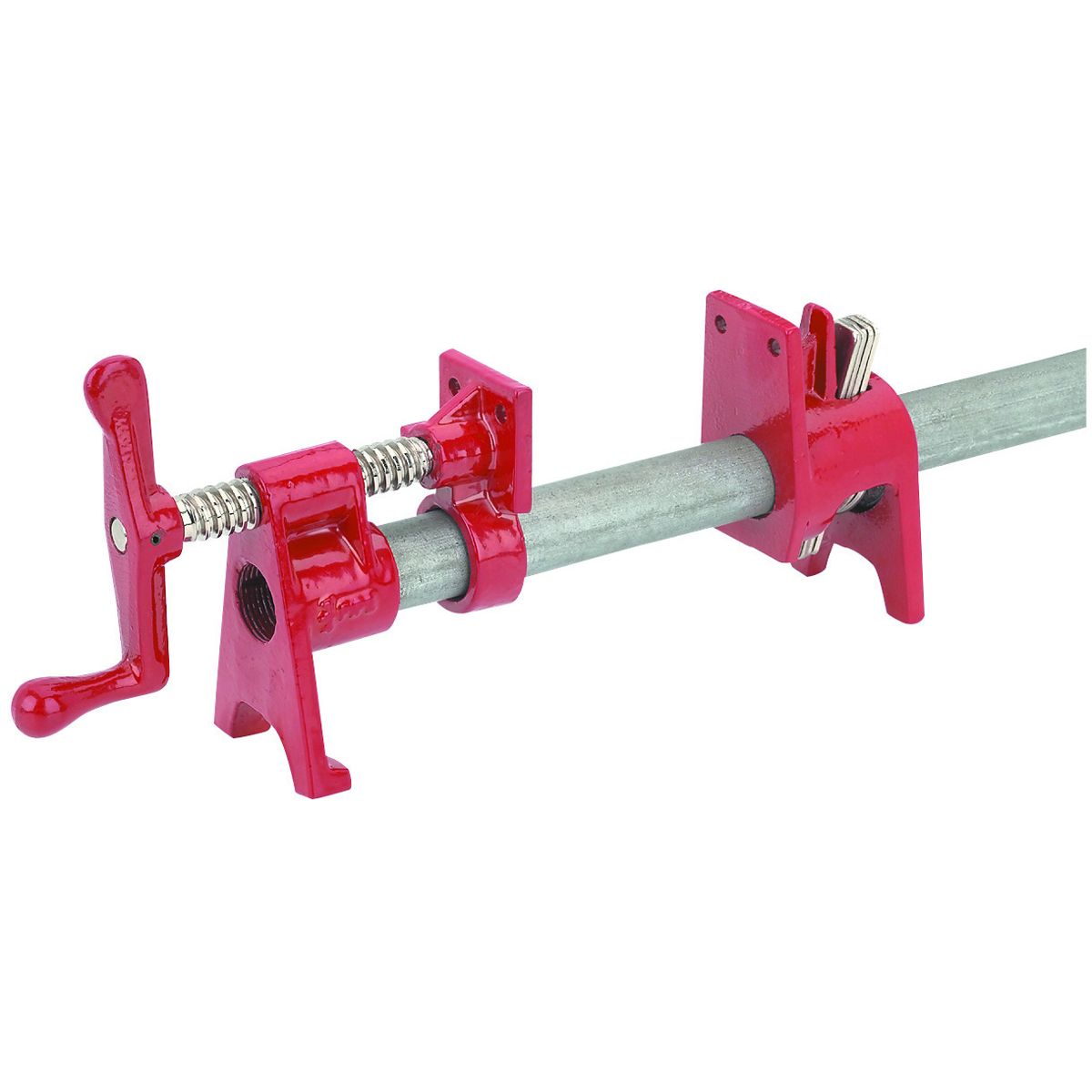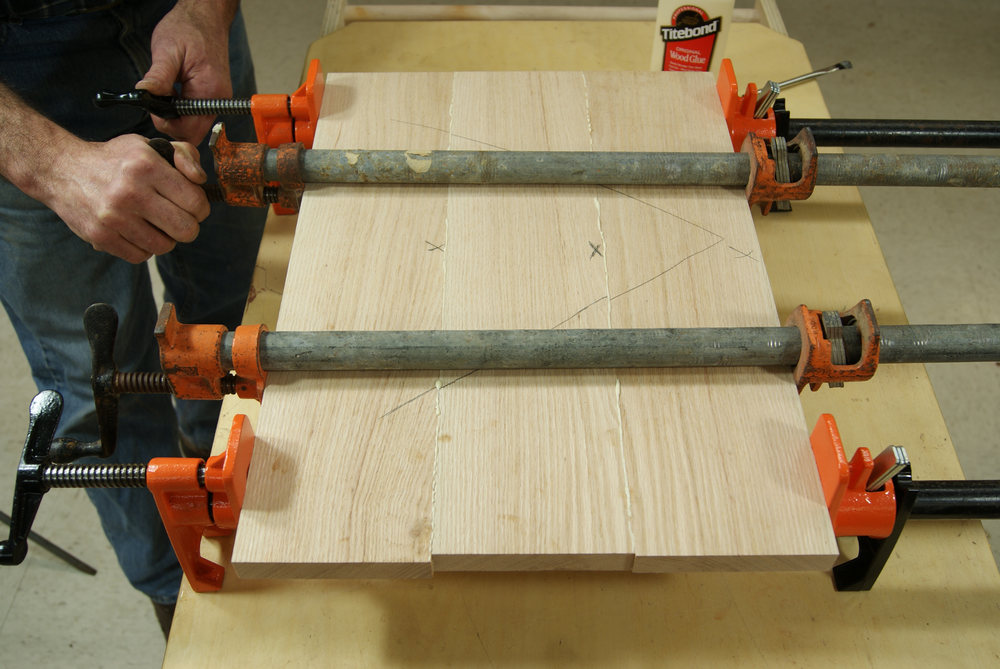Not much to report lately. Got my second set of
3/4 inch pipe clamp ends today at Harbor Freight, using a 30% off coupon.
Now I have a pair of these clamps. I plan on going to Home Depot and having them cut down a 10-foot 3/4-inch galvanized pipe into sections, and threading the ends, so I can put the clamps together. Hope to do some panel glue-ups when it gets warm enough in the garage for the glue.

If anyone has any experience with these type of pipe clamps, I would like to know what is the best lengths of pipe I should have. I'm thinking cutting a 10-foot pipe down to (2) three-foot lengths and (2) two-foot lengths. Also, I might buy some pipe couplers to join the three-foot and two-foot sections together to make five-foot bars. As I have no experience in this area, I'm open to any suggestions.

I really have no idea what I will make. Other than trying to cut some pallet slats and gluing them together to make some panels, I have nothing in mind. This is truly a case of learning a new skill and hoping to translate it into a project later on.
Wish me luck!


 Could not believe my eyes this afternoon at our local Fleet store. They had a small 4X4 foot chicken coop prefab for sale for $1299.99!
Could not believe my eyes this afternoon at our local Fleet store. They had a small 4X4 foot chicken coop prefab for sale for $1299.99!



 If anyone has any experience with these type of pipe clamps, I would like to know what is the best lengths of pipe I should have. I'm thinking cutting a 10-foot pipe down to (2) three-foot lengths and (2) two-foot lengths. Also, I might buy some pipe couplers to join the three-foot and two-foot sections together to make five-foot bars. As I have no experience in this area, I'm open to any suggestions.
If anyone has any experience with these type of pipe clamps, I would like to know what is the best lengths of pipe I should have. I'm thinking cutting a 10-foot pipe down to (2) three-foot lengths and (2) two-foot lengths. Also, I might buy some pipe couplers to join the three-foot and two-foot sections together to make five-foot bars. As I have no experience in this area, I'm open to any suggestions. I really have no idea what I will make. Other than trying to cut some pallet slats and gluing them together to make some panels, I have nothing in mind. This is truly a case of learning a new skill and hoping to translate it into a project later on.
I really have no idea what I will make. Other than trying to cut some pallet slats and gluing them together to make some panels, I have nothing in mind. This is truly a case of learning a new skill and hoping to translate it into a project later on.

